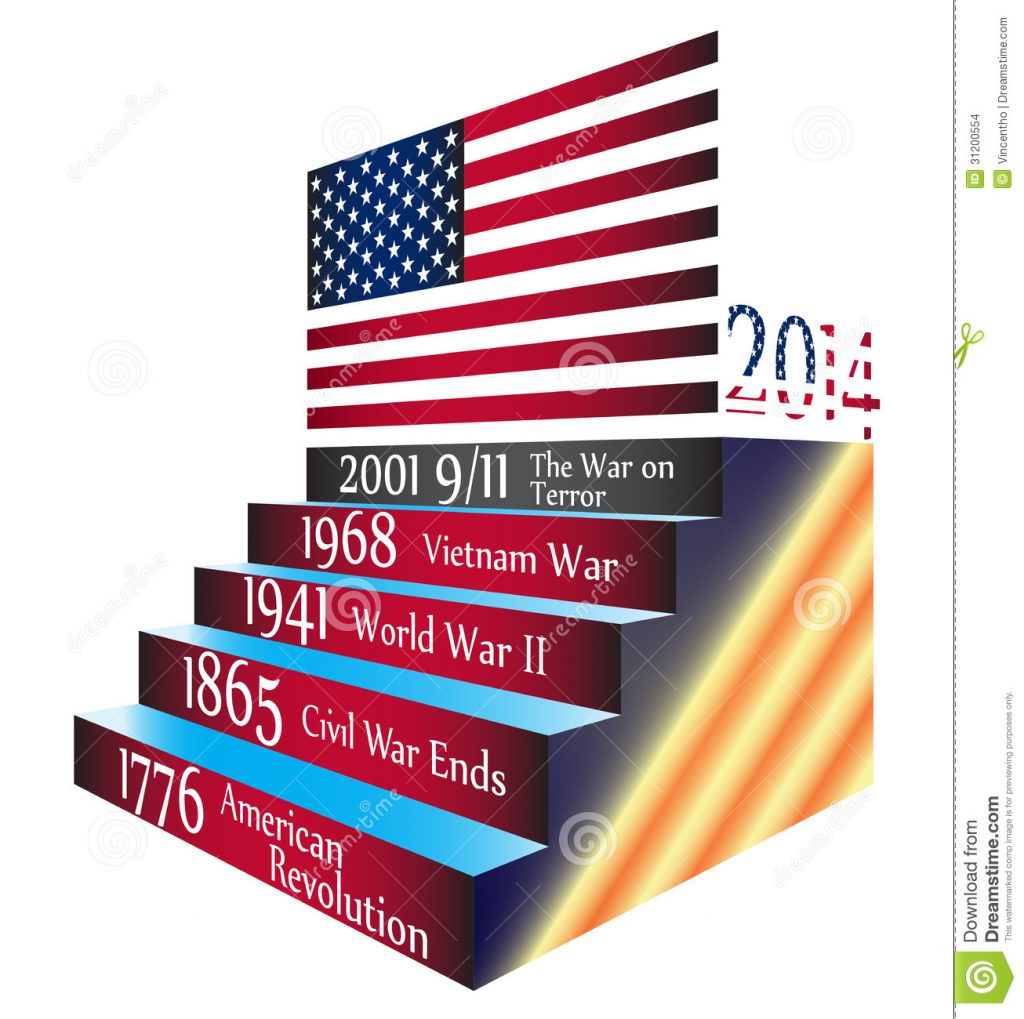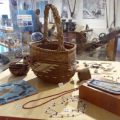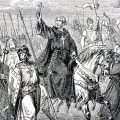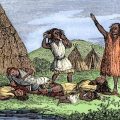
Two hundred years ago, in 1818, the United States was just beginning to embark on its expansionist policy known as Manifest Destiny. Under this policy, many non-Indian Americans felt that it was the divine destiny of the United States to expand and to spread American culture, language, and the Christian religion across the continent.
In his book The Bitter Waters of Medicine Creek: A Tragic Clash Between White and Native America, Richard Kluger describes manifest destiny this way:
“God had assigned the American people, robust and pure of heart, to spread the gospel of liberty and democracy around the earth—well, certainly across all of North America—and prosperity and happiness would follow.”
New England
In Maine, Penobscot chief John Attean attempted to counter an economic decline by selling timber from the tribe’s northern islands. The State of Massachusetts (Note: Maine is a province of Massachusetts at this time) claimed that the Penobscot had no right to sell the timber and pressed for a new treaty. In the treaty, the Penobscot gave up lands in exchange for goods and supplies and a promise of annual payments.
In Massachusetts, guardianship was established for the Wampanoag on the Fall River Reservation.
Banquet
In Georgia, a formal banquet was held to honor Creek leader William McIntosh for his courageous military service during the War of 1812. Those giving the banquet recognized him not as an Indian, but as a Southerner who was living among the Indians. According to one newspaper report:
“we have seen him in the bosom of the forest, surrounded by a band of wild and ungovernable savages—we have seen him too, in the drawing room in the civilized walks of life, receiving that need of approbation which his services so justly merit.”
First Seminole War
American troops under Andrew Jackson and Creek warriors under William McIntosh invaded Spanish Florida and attacked the Seminole village of Chief Bolek on the Suwanee River. The Seminoles escaped the attack, but the Americans captured two Englishmen who had been living with the Seminole. The Englishmen were tried and hanged for aiding the Indians.
The American army also captured a number of women and children, including Billy Powell (who would later be known as the warrior Osceola).
These skirmishes are referred to as the First Seminole War. According to historian J. Leitch Wright, in his book Creeks and Seminoles:
“The causes of this First Seminole War are not hard to find, and in many respects that conflict represented a continuation of the Creek War.”
Anthropologist William Sturtevant, in an essay in North American Indians in Historical Perspective, writes:
“The First Seminole War amounted to the conquest of Spanish Florida.”
With regard to the Seminole military strategy during the First Seminole War, historian James Covington, in his book The Seminoles of Florida, reports:
“Because Jackson’s force outnumbered the Seminoles by at least ten to one, the Indians directed some scattered shots toward the advancing soldiers and then fled to nearby lowlands.”
War
In Kansas, Shawnee war leader Kishkalwa led a raid against the Osage. Kishkalwa was 85 years old at this time.
In Wisconsin, Ojibwa war leader Black Dog raised a small war party – 16 warriors – to seek revenge from the Dakota. The party traveled deep into Dakota territory, but were discovered and with the exception of the warrior Bug-aun-auk, all were killed. Bug-aun-auk escaped by using supernatural means. The Dakota lost 33 warriors in the battle.
Religion
In Oklahoma, a Pawnee warrior captured a young Spanish boy with the intent of sacrificing him to Morning Star. Knife Chief called together a council of Pawnee chiefs, and, with the help of traders Louis Papin and Manuel Lisa, used his own property to ransom the boy from the warrior. In this way, Knife Chief stopped the ceremony.
Militia
In California, the Spanish Franciscan missionaries at La Purísima and Santa Barbara missions organized the Indians into militia units to defend the California coast. The militia units consisted of archers, infantry, and cavalry lancers. The Indians appeared to be enthusiastic about the military training.
Book
Reverend John Heckewelder, the pastor to the Christianized Indians of Pennsylvania, published History, Manners, and Customs of the Indian Nations. In his letter of transmittal to the American Philosophical Society he wrote:
“The sure way to obtain correct ideas, and a true knowledge of the characters, customs, manners, &c., of the Indians, and to learn their history, is to dwell among them for some time, and having acquired their language, the information wished for will be obtained in the common way; that is, by paying attention to their discourse with each other on different subjects, and occasionally asking them questions; always watching for the proper opportunity, when they do not suspect your motives, and are disposed to be free and open with you.”




Leave a Reply